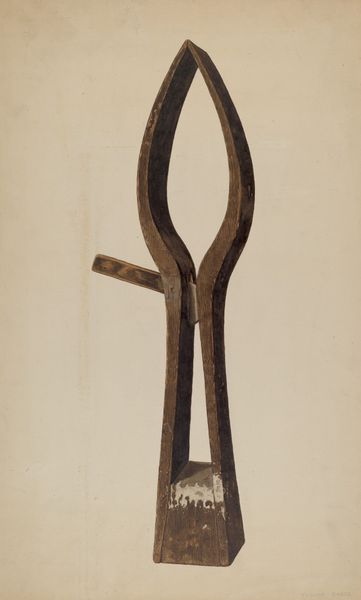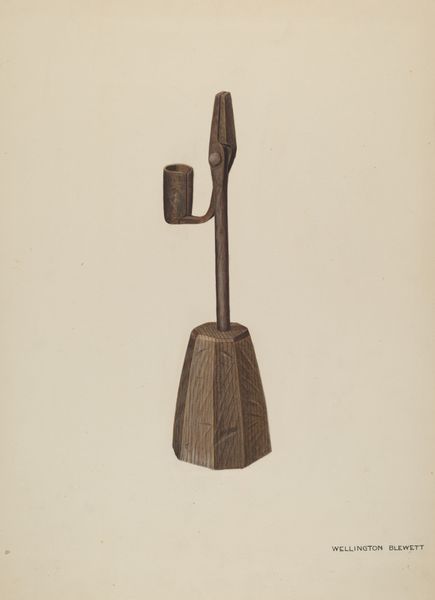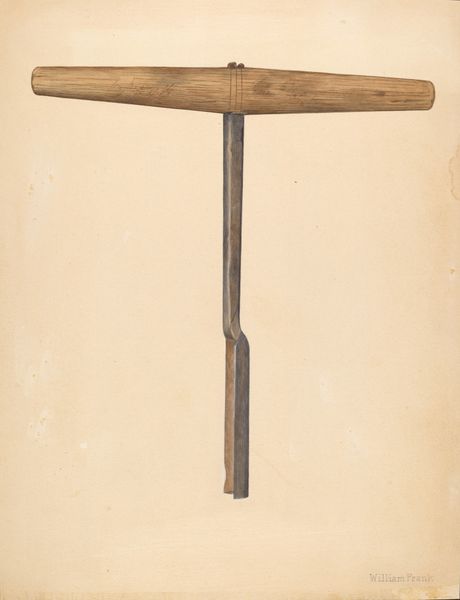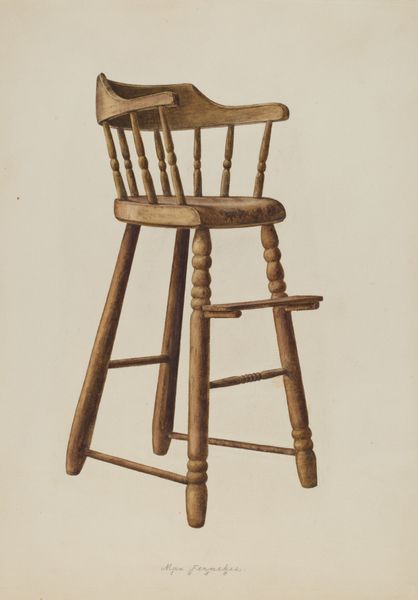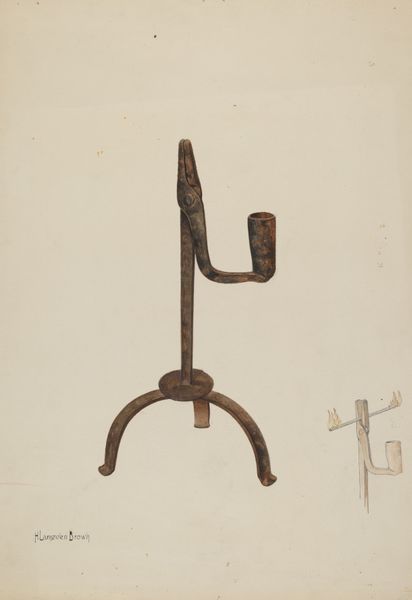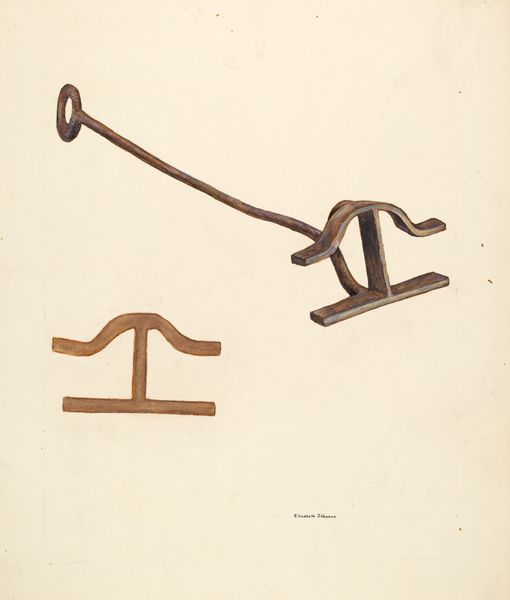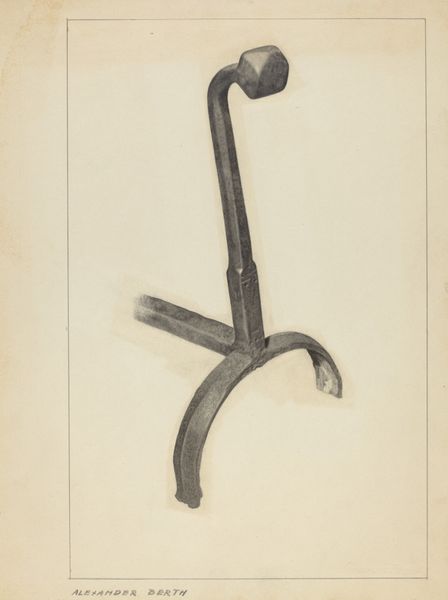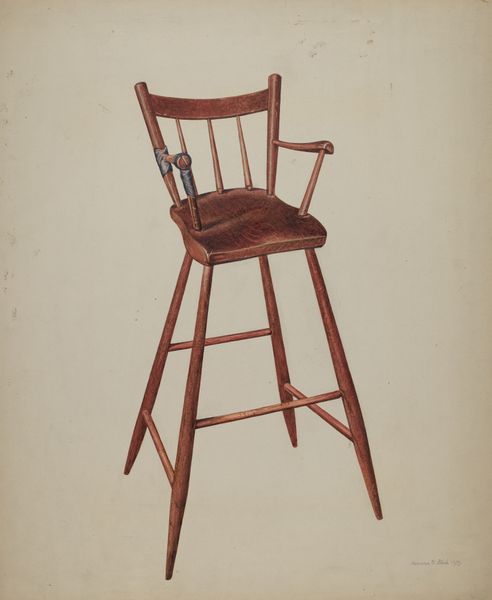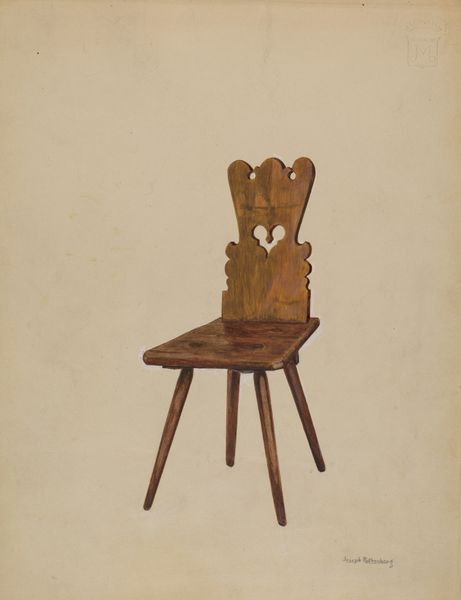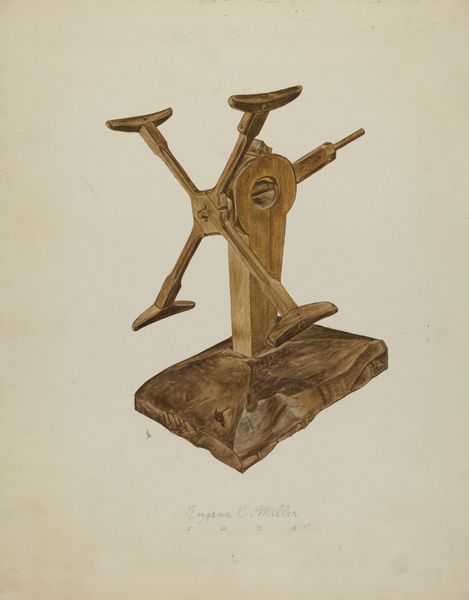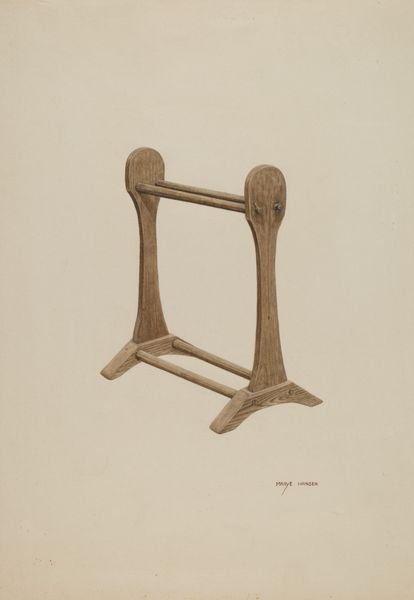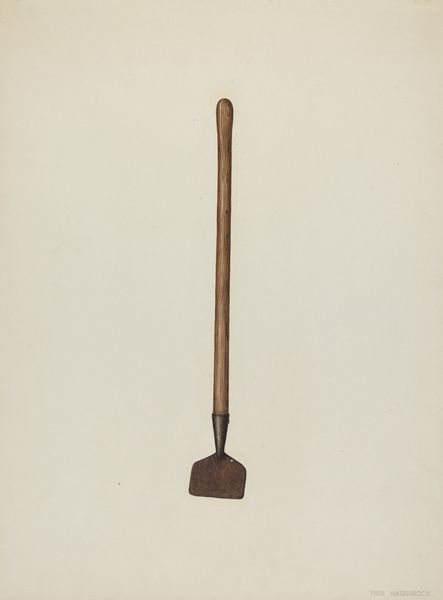
drawing, watercolor
#
drawing
#
water colours
#
watercolor
#
geometric
#
watercolour illustration
#
realism
Dimensions: overall: 41.5 x 33.2 cm (16 5/16 x 13 1/16 in.)
Copyright: National Gallery of Art: CC0 1.0
Curator: This watercolour from around 1938 is entitled “Shaker Compass.” What grabs your attention initially? Editor: I’m struck by the artist’s clear and straightforward depiction of a practical object, almost diagrammatic. It feels like a celebration of the compass, highlighting the craft in a simple, almost reverential way. What’s your read on this, seeing as it seems to fit into a utilitarian movement? Curator: I think you’re right to emphasize the focus on materiality and production here. This isn’t simply a representation; it's a consideration of the compass itself. Shaker design principles were so deeply intertwined with their belief system that the means of making became a kind of devotional practice. Editor: So the act of creating the object is as important as the object itself? Curator: Precisely! We need to consider the compass not just as a tool, but as the end result of a labor process deeply imbued with Shaker values: simplicity, utility, honesty. It makes me think about the artist's own labour, reproducing this object meticulously. And how the choice of watercolor – a relatively simple medium – reflects those same values. Why paint a compass, what ideas are they trying to spread, one circle at a time? Editor: The drawing itself seems very functional, very clear about how the compass would work. Do you think it represents more than its use? Curator: I’d argue that the watercolor elevates it. The very act of artistic representation asks us to contemplate the role of labour, the societal value assigned to craftsmanship versus "fine art", the history of this sect and its beliefs - through one little geometrical tool. Editor: It is surprising to see it almost devoid of any "artistic flair," which maybe *is* its artistic flair? Curator: I see your point entirely. We are accustomed to seeing tools used. Instead, this challenges us to consider tools through artistic labor and devotion, using minimal, available materials to handcraft a drawing out of watercolors. Editor: That definitely gives me a new perspective. I wouldn't have considered the artist's labour to be a part of the picture but, then again, isn't labor what this sect were all about in the first place? Curator: Indeed! Focusing on these details provides insight into this compass, the group behind it, and even into broader questions about the role of art.
Comments
No comments
Be the first to comment and join the conversation on the ultimate creative platform.

